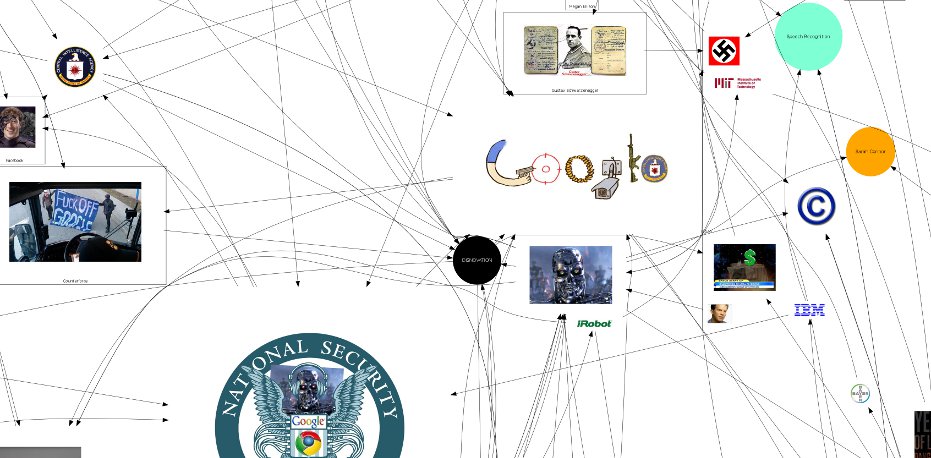Enter Skynet. Along with his tech-savvy partner on the project, the electronics engineer Grant Bajema, Burchat has designed a barcoded and GPS-tagged net that he believes could be mounted on the homes, balconies and backyards of the near future. The opulent gulf state wants to lead what it predicts will be a $10bn industry by 2025, and has offered a US$1m prize to the most promising concept.
RT @MotherJones: Inside the billion-dollar industry that turned local cops into SEAL Team Six
In 1984, just 40 percent of SWAT teams were serving warrants. By 2012, the number was 79 percent. In all, the number of SWAT raids across the country has increased 20-fold since the 1980s, going from 3,000 per year to at least 60,000. And SWAT teams are no longer limited to large cities: In the mid-1980s, only 20 percent of towns with populations between 25,000 and 50,000 had such teams. By 2007, 80 percent did. In the end, the driving factor behind the police arms race may be not so much greater risk, but greater spending. This year, Homeland Security will give out $1.6 billion to state agencies and local police departments for counterterrorism and disaster preparedness.
Terminator studies and the silliness heuristic
Most people follow a summary dismissal heuristic: given surface characteristics of a message, they quickly judge whether it is worth considering or dismiss with a “oh, that’s just silly!” I like to call it the silliness heuristic: we ignore “silly” things except being in a playful mood.What things are silly? One can divide silliness into epistemic silliness, practical silliness, social silliness and political silliness.
Security Policy and Strategy Implications of Parallel Scientific Revolutions
This paper examines policy, legal, ethical, and strategy implications for national security of the accelerating science, technology, and engineering (ST&E) revolutions underway in five broad areas: biology, robotics, information, nanotechnology, and energy (BRINE), with a particular emphasis on how they are interacting. The paper considers the timeframe between now and 2030 but emphasizes policy and related choices that need to be made in the next few years to shape the future competitive space favorably, and focuses on those decisions that are within U.S. Department of Defense’s (DOD) purview. The pace and complexity of technological change mean that linear predictions of current needs cannot be the basis for effective guidance or management for the future. These are issues for policymakers and commanders, not just technical specialists.
“In the longer term, fully robotic soldiers may be developed and deployed”
“In the longer term, fully robotic soldiers may be developed and deployed, particularly by wealthier countries,” the paper says (thankfully, no plans to add ‘living tissue’ on the outside are mentioned). The study thus foresees the Pentagon playing a largely supervisory role over autonomous machines as increasingly central to all dimensions of warfare—from operational planning to identifying threats via surveillance and social media data-mining; from determining enemy targets to actually pursuing and executing them.
How the Pentagon’s Skynet Would Automate War
Pentagon officials are worried that the US military is losing its edge compared to competitors like China, and are willing to explore almost anything to stay on top—including creating watered-down versions of the Terminator. Taken together, the “scientific revolutions” catalogued by the NDU report—if militarized—would grant the Department of Defense (DoD) “disruptive new capabilities” of a virtually totalitarian quality. Pentagon-funded research on data-mining feeds directly into fine-tuning the algorithms used by the US intelligence community to identify not just ‘terror suspects’, but also targets for the CIA’s drone-strike kill lists.It is far from clear that the Pentagon’s Skynet-esque vision of future warfare will actually reach fruition. That the aspiration is being pursued so fervently in the name of ‘national security,’ in the age of austerity no less, certainly raises questions about whether the most powerful military in the world is not so much losing its edge, as it is losing the plot.
RT @NafeezAhmed: Pentagon wants to create The For And Skynet, My latest exclusive for @VICE @…
RT @NafeezAhmed: Pentagon wants to create The For And Skynet, My latest exclusive for @VICE @…
Imagination, reality flow in opposite directions in the brain
As real as that daydream may seem, its path through your brain runs opposite reality. Aiming to discern discrete neural circuits, researchers have tracked electrical activity in the brains of people who alternately imagined scenes or watched videos.
Art in a Time of Surveillance via @maassp
Surveillance art — or as one academic has called it, artveillance — fits into a creative continuum that stretches back to at least the 1930s, when the introduction of “miniature” cameras, such as the Leica, made it relatively easy for photographers to secretly take pictures. Walker Evans led the way with undercover pictures taken on the New York City subway with a Leica hidden behind his coat.
Watching You, Watching Me
Moving Walls 22 / Watching You, Watching Me explores the intersection between photography and surveillance. Employing a dynamic range of approaches—from documentary to conceptual practice, from appropriation to street art—these 10 artists provide a satellite-to-street view of the ways in which surveillance culture blurs the boundaries between the private and public realm.
